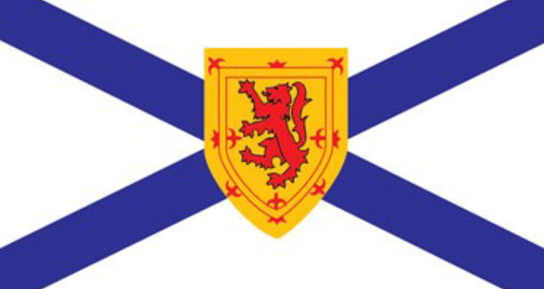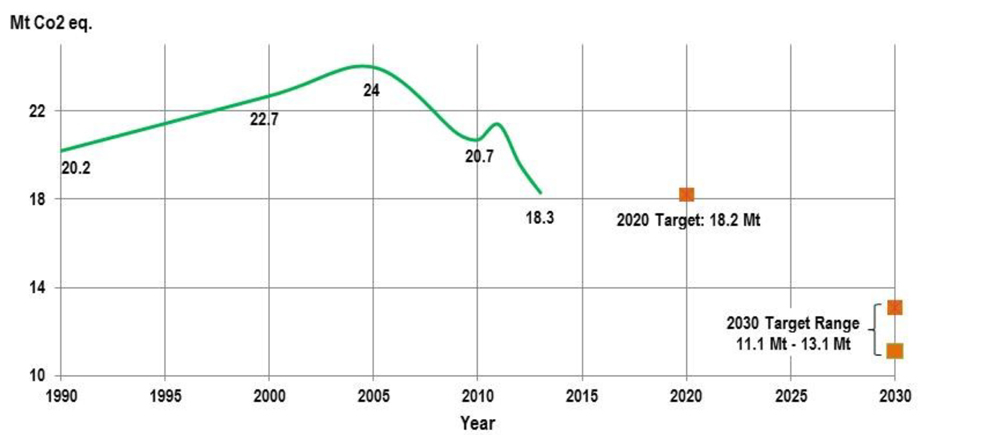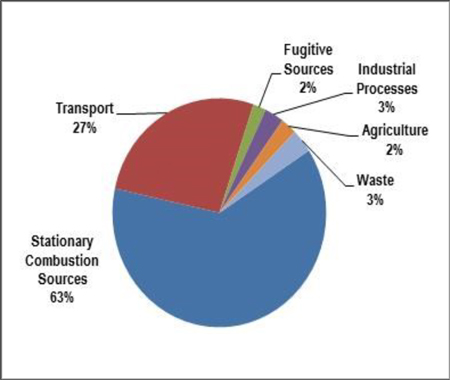Nova Scotia: Environment profile
Note
This information was current as of November 2015.

Nova Scotia (NS) in brief
- Premier:
- Hon. Stephen McNeil (Liberal Party)
- Population:
- 942,700 (Sept. 2014)
- Total Area:
-
55,284 km
2
- Land:
- 53,338 km 2
- Freshwater:
- 1,946 km 2
- Real GDP (gross domestic product) 2013:
- $36.0 billion (in 2007 dollars)
- Contribution to real Canadian GDP 2013:
- 2.1%
NS budget 2015-16
- Budgeted total expenditures:
- $10 billion
- Funds Allocated to DoE:
-
$25.3 million
- 0.3% of total budget
- 4.3% decrease over 2014-15
Key environmental federal-provincial agreements
- An Agreement on the Equivalency of Federal and NS Regulations for the Control of Greenhouse Gas Emissions from Electricity Producers in NS
- Canada-NS Agreement In Principle on Efforts to Address Climate Change
- Letter of Agreement between NS and Canada Respecting the Establishment of a Federal Protected Area on Sable Island
- Agreement Concerning the Implementation of the North American Waterfowl Management Plan and Other Bird Conservation through the Eastern Habitat Joint Venture
Climate change
- Department responsible for climate change:
- Department of Environment
- Minister responsible for climate change:
- Hon. Andrew Younger
- Legislation and regulations:
- Anti-Idling Act, Environmental Goals and Sustainable Prosperity Act, Electricity Act, Wind Turbine Facilities Municipal Taxation Act, Greenhouse Gas Emissions Regulations, Renewable Energy Act, Renewable Electricity Regulations, Air Quality Regulations, Energy Efficient Appliances Regulations
Nova Scotia GHG (greenhouse gas) emissions and targets

Sources:
- National Inventory Report (2015)
- 2020 Target: NS Climate Change Action Plan, 2009
- 2030 Target: New England Governors/Eastern Canadian Premiers resolution adopted Aug. 31, 2015
Long description
Figure 1 presents a single time series line graph with the horizontal axis spanning years 1990 to 2030 in five year increments. The vertical axis is in megatons of carbon dioxide equivalent and spans ten to 22 Mt in increments of four. The line begins at 20.2 Mt CO2 equivalent in 1990 and increasing to a peak of 24 Mt around the year 2004, falling to 20.7 Mt in 2010, and to 18.3 Mt around 2013. The graph also indicates that the 2020 emissions target is 18.2 Mt and that the 2030 target range is 11.1 to 13.1 Mt.
Provincial GHG emissions reduction targets
- 10% below 1990 levels by 2020
- Halfway to 2020 target by 2015
- 35-45% below 1990 levels by 2030 (NEG/ECP target)
- GHG emission from human sources reduced by 80% below 2009 levels in 2050
- 2020 Target Equivalent to a 2005 baseline: 24.3% below
- 2030 target equivalent to a 2005 baseline: 45-54% below
NS sources of GHG emissions, 2013

Source: National Inventory Report, 2015
Long description
Figure 2 presents a pie chart of the distribution of major greenhouse gas sources in Nova Scotia.
- Stationary combustion sources: 63%
- Transport: 27%
- Fugitive sources: 2%
- Industrial processes: 3%
- Agriculture: 2%
- Waste: 3%
- Climate Change Strategies: Toward a Greener Future: Climate Change Action Plan (2009); Renewable Electricity Plan (2010); Sustainable Transportation Strategy (2013); Electricity Efficiency and Conservation Plan (2014)
- Total NS Emissions, 2013: 18.3 Mt (Source: National Inventory Report, 2015)
- NS Contribution to total Canadian GHG Emissions, 2013: 2.5%
- Ranked 7th largest GHG emitter amongst Canadian provinces and territories in 2013
- GHG per Capita, 2012: 20.1 tonnes; ranked 4th largest GHG emitter per Capita, 2012
- The majority of NS GHG reductions are to be achieved by a declining cap on emissions for NS Power (NS electricity provider): absolute cap of 7.5 Mt by 2020; 4.5 Mt by 2030.
- The Renewable Electricity Plan establishes a target of 25% renewable electricity by 2015; 40% by 2020. The NS Community Feed-in Tariff for renewable energy projects was discontinued in August 2015; however the government still expects to achieve its renewable energy targets.
- The Climate Change Plan commits NS to increase overall energy efficiency by 20% over 2008 levels by 2020.
Water
- Departments responsible for water:
- Department of Environment, Department of Agriculture, Municipal Affairs, Service Nova Scotia
- Minister responsible for water:
- Hon. Andrew Younger
- Legislation and regulations:
- Environmental Goals and Sustainable Prosperity Act, Water Resources Protection Act, Municipal Government Act, Environment Act, Water Act, Ditches and Watercourse Act, Agricultural Marshland Conservation Act, Water and Wastewater Facilities and Public Drinking Water Supplies Regulations, On-site Sewage Disposal Systems Regulations, Wildlife Habitat and Watercourses Protection Regulations, Activities Designation Regulations
- Water strategies: Water for Life: Nova Scotia’s Water Resource Management Strategy (2010), Nova Scotia Wetland Conservation Policy (2011), A Drinking Water Strategy for Nova Scotia (2002, 2005)
- Key water priorities include wastewater infrastructure, wetland conservation, drinking water standards, coastal management.
- After scientific review, a moratorium on hydraulic fracturing/shale gas has been enacted.
- Water for Life provides a long-term plan for integrated water management, and includes commitments aimed at protecting and understanding water quality and quantity, as well as engaging all parties involved in water stewardship. The strategy established the NS Water Advisory Group to work in partnership to implement the strategy and make recommendations on the adjustment of provincial regulations.
- The Wetland Conservation Policy establishes 4 objectives to prevent net loss of wetlands: to manage human activity in or near wetlands with the goal of no loss in wetlands of Special Significance and no net loss in others; to promote wetland protection and stewardship and increase awareness of the importance of wetlands; to promote long-term net gain in wetlands; and to encourage the use of buffers to better ensure the integrity of wetlands adjacent to development.
Environment Canada and NS Collaboration on Water
- Atlantic Ecosystem Initiative
- Hydrometric Monitoring
- Canada-NS Water Quantity Surveys Cost Sharing Agreement
- Muskrat Falls/Lower Churchill Hydroelectric Generation Project/Maritime Link
- National Conservation Plan Gulf of Maine Initiative
Biodiversity and wildlife
- Department responsible for biodiversity and wildlife:
- Department of Natural Resources
- Minister responsible for biodiversity and wildlife:
- Hon. Lloyd Hines
- Legislation:
- Environmental Goals and Sustainable Prosperity Act, Endangered Species Act, Provincial Parks Act, Wildlife Act, Wilderness Areas Protection Act
- Biodiversity and Conservation Strategies: The Path We Share: A Natural Resource Strategy for Nova Scotia 2011-2020, Our Parks and Protected Areas – A Plan for Nova Scotia (2013), Coastal Management Framework (2008)
| Extirpated | Endangered | Threatened | Special Concern | |
|---|---|---|---|---|
| Total: 46 Source: Species at Risk Public Registry January 2015 |
1 | 15 | 12 | 18 |
- The 2011 natural resources strategy, The Path We Share, is a 10-year plan focusing on biodiversity, forests, geological resources and parks. It sets 23 goals and identifies strategic actions to achieve them. A companion action plan sets out 32 early actions.
- The 2013 Parks and Protected Areas Plan provides for the protection of 13% of the province’s landmass by 2015 and includes efforts to conserve other lands that could increase that protection beyond 13%. Biodiversity connectivity, species vulnerability, and ecosystem migration and adaptation will be considered when determining which provincial areas to protect under the plan.
- The Forest Biodiversity Science Advisory Committee was established in August 2015 to advise on forest policy and landscape-scale management approaches.
- Percentage of freshwater and land protected in NS: 8.4% (Source: Canadian Environment Sustainability Indicators, 2013).
- Environment Canada maintains 14 protected areas in NS, including 6 National Wildlife Areas and 8 Migratory Bird Sanctuaries, comprising over 7,000 hectares of NS’s protected lands and waters.